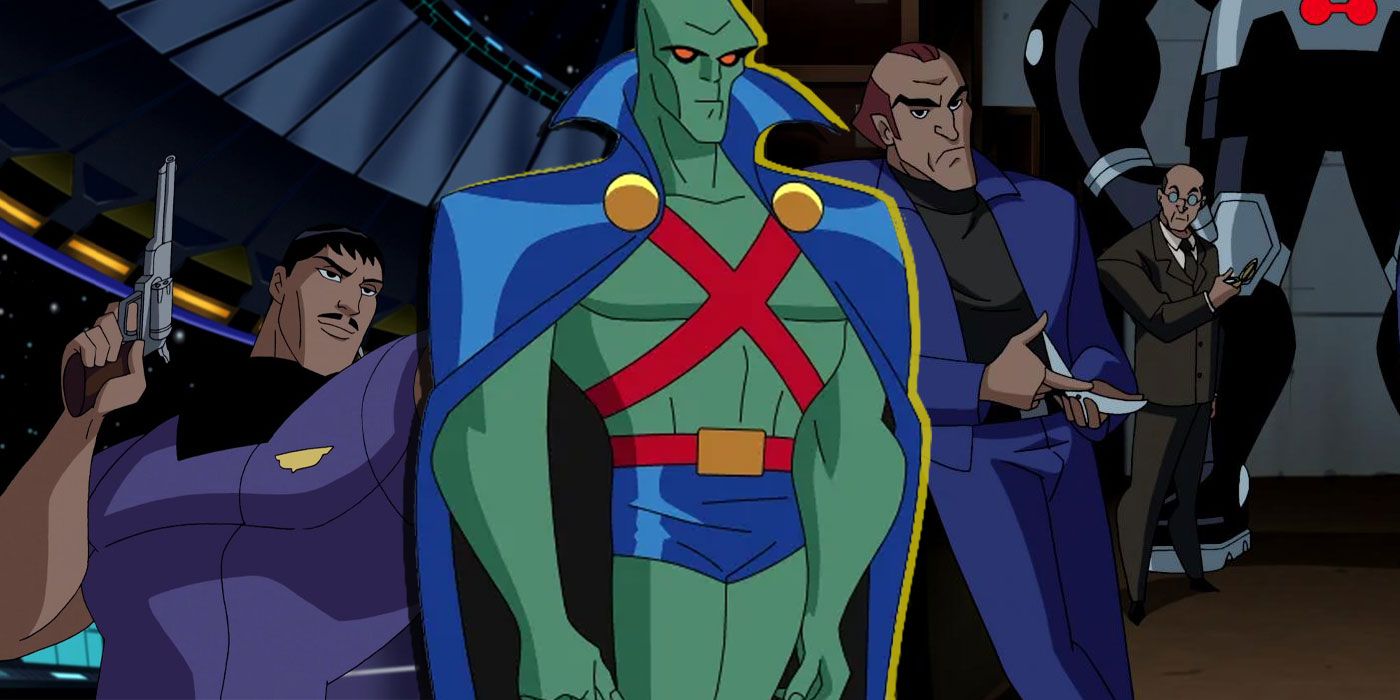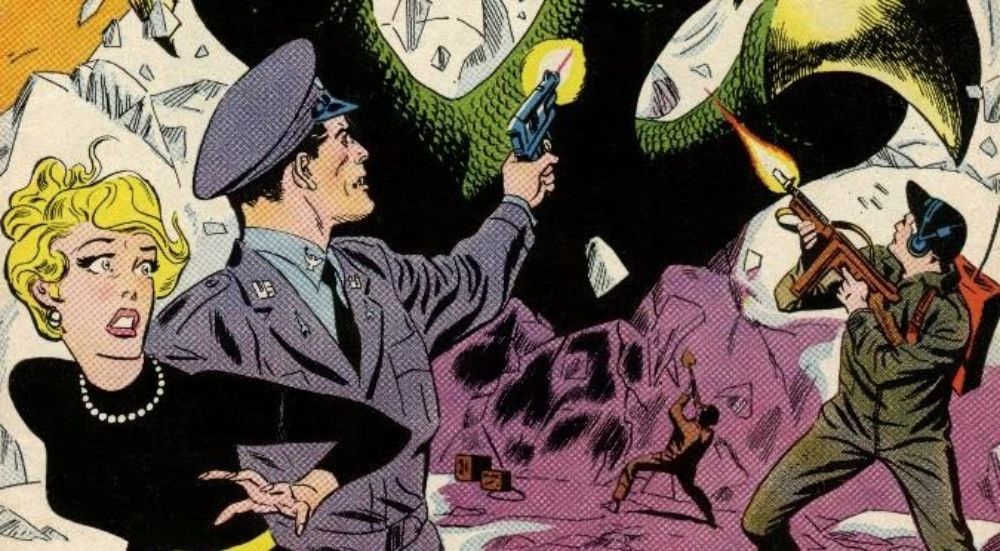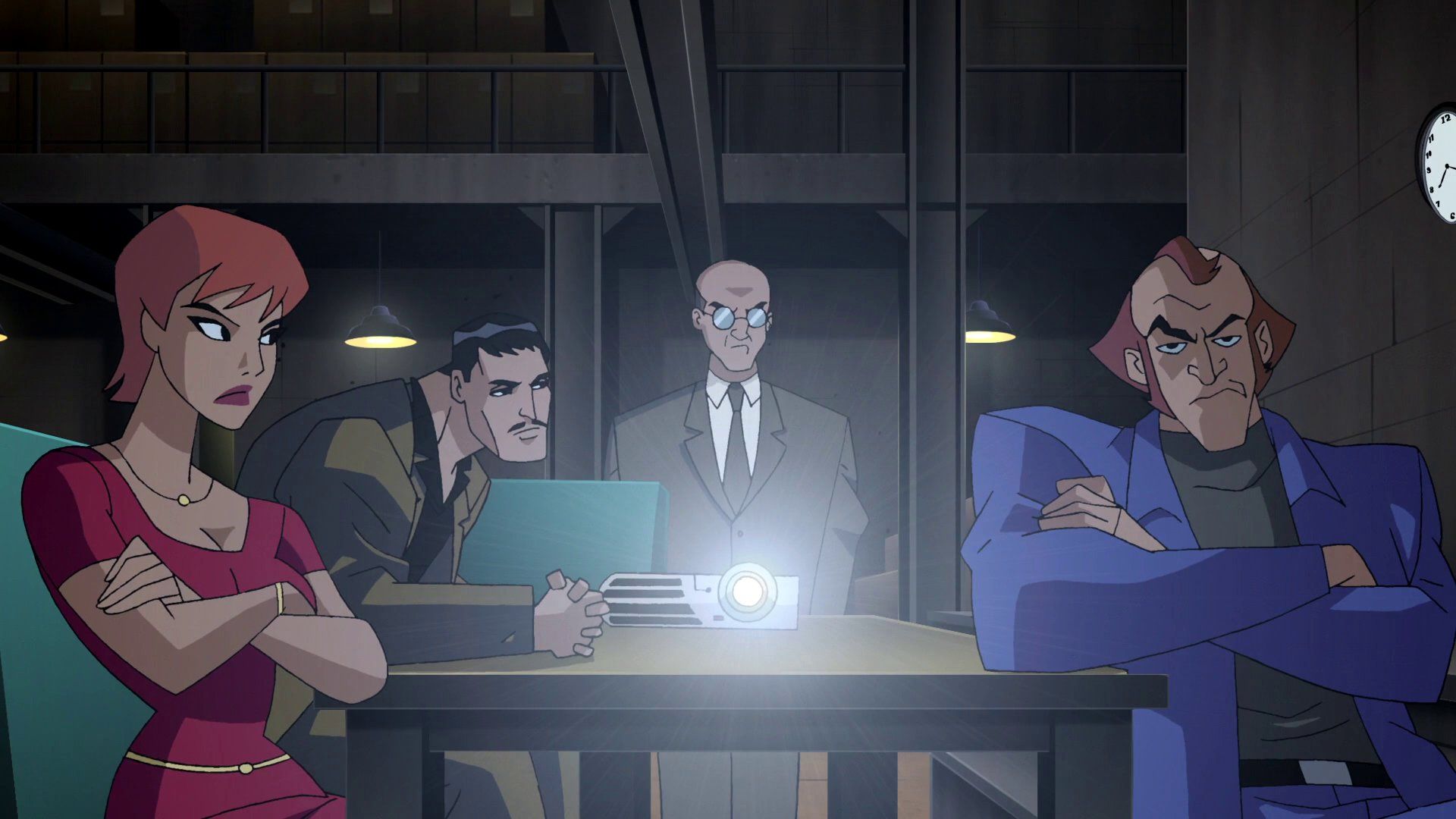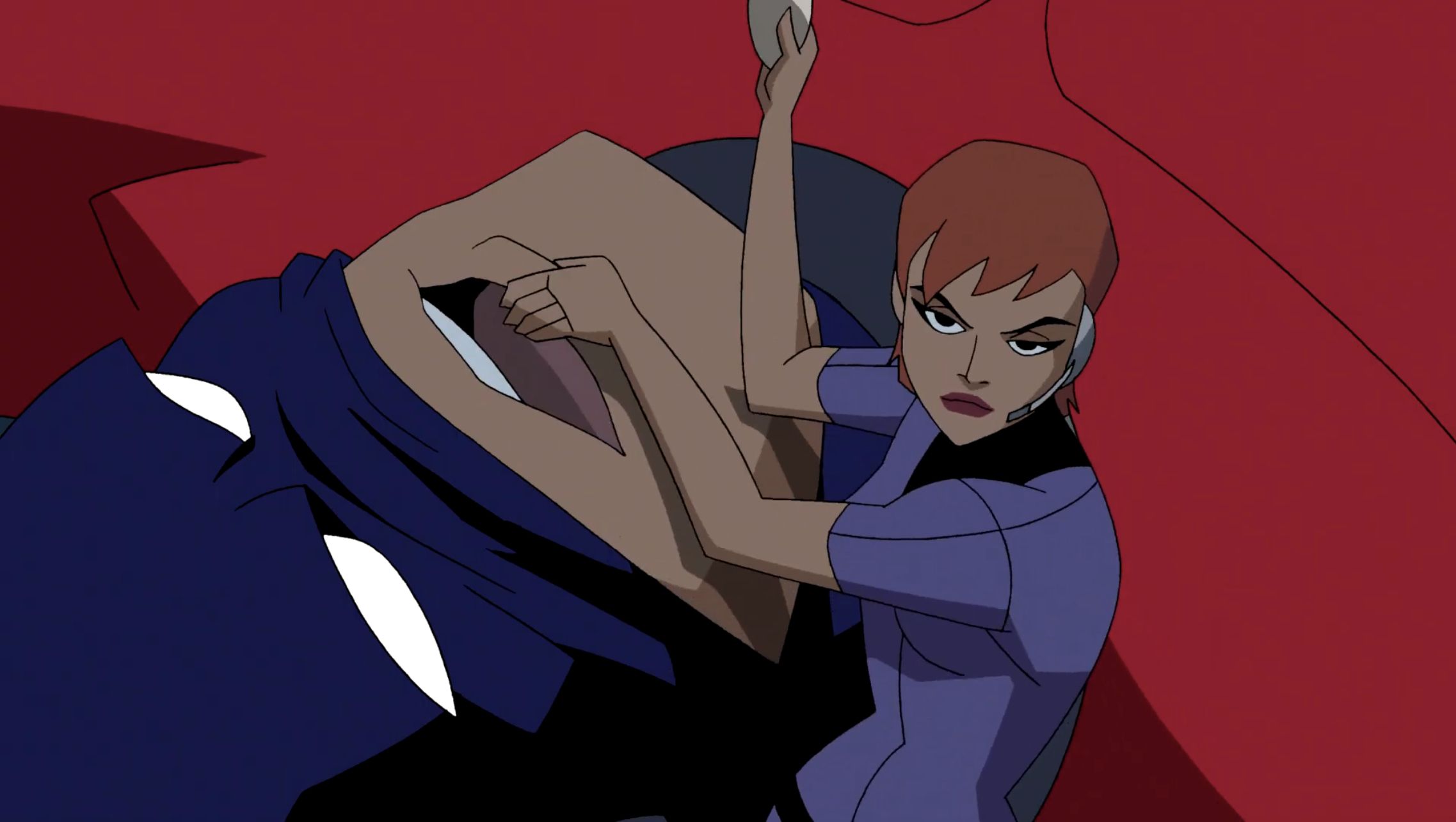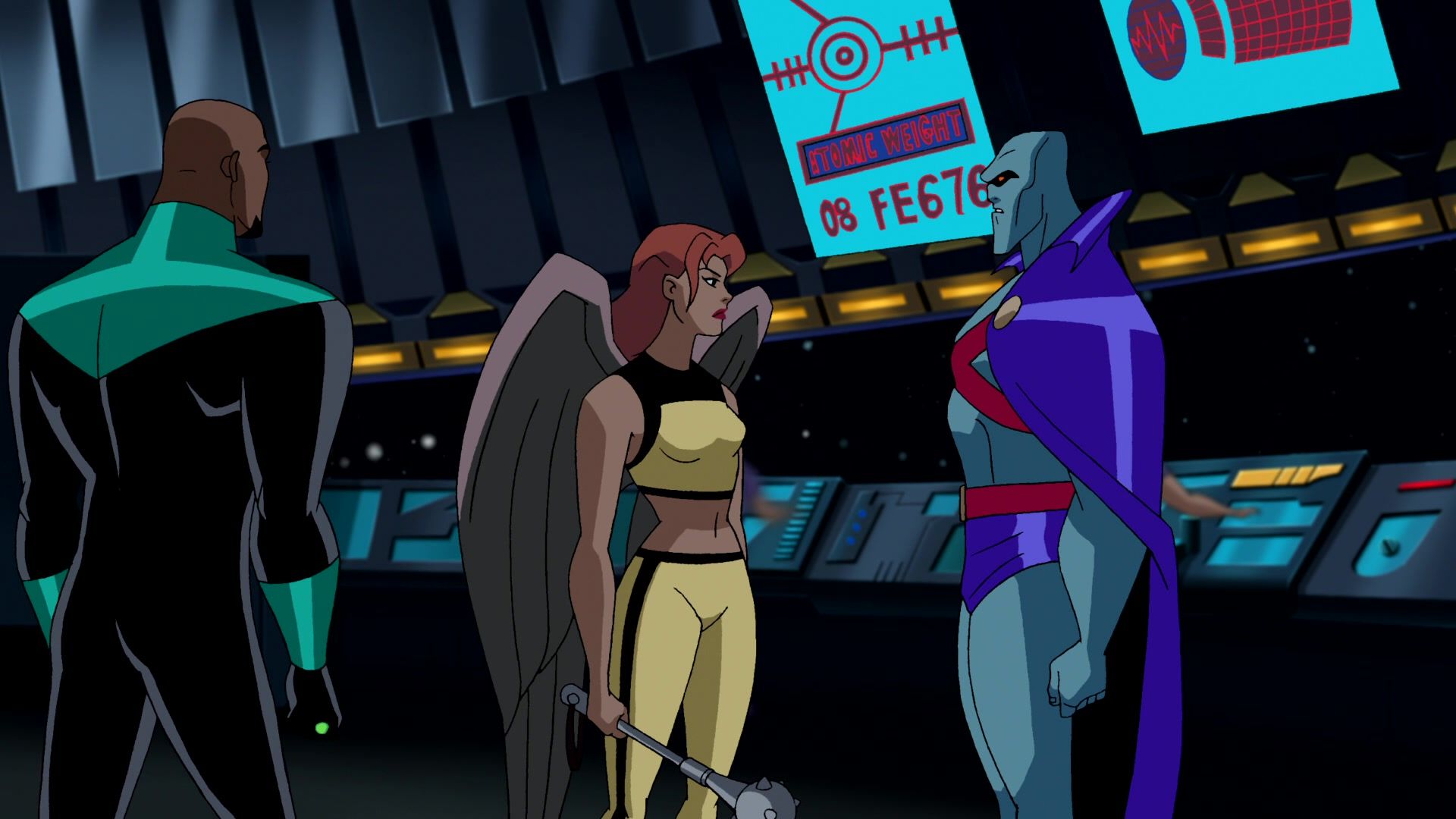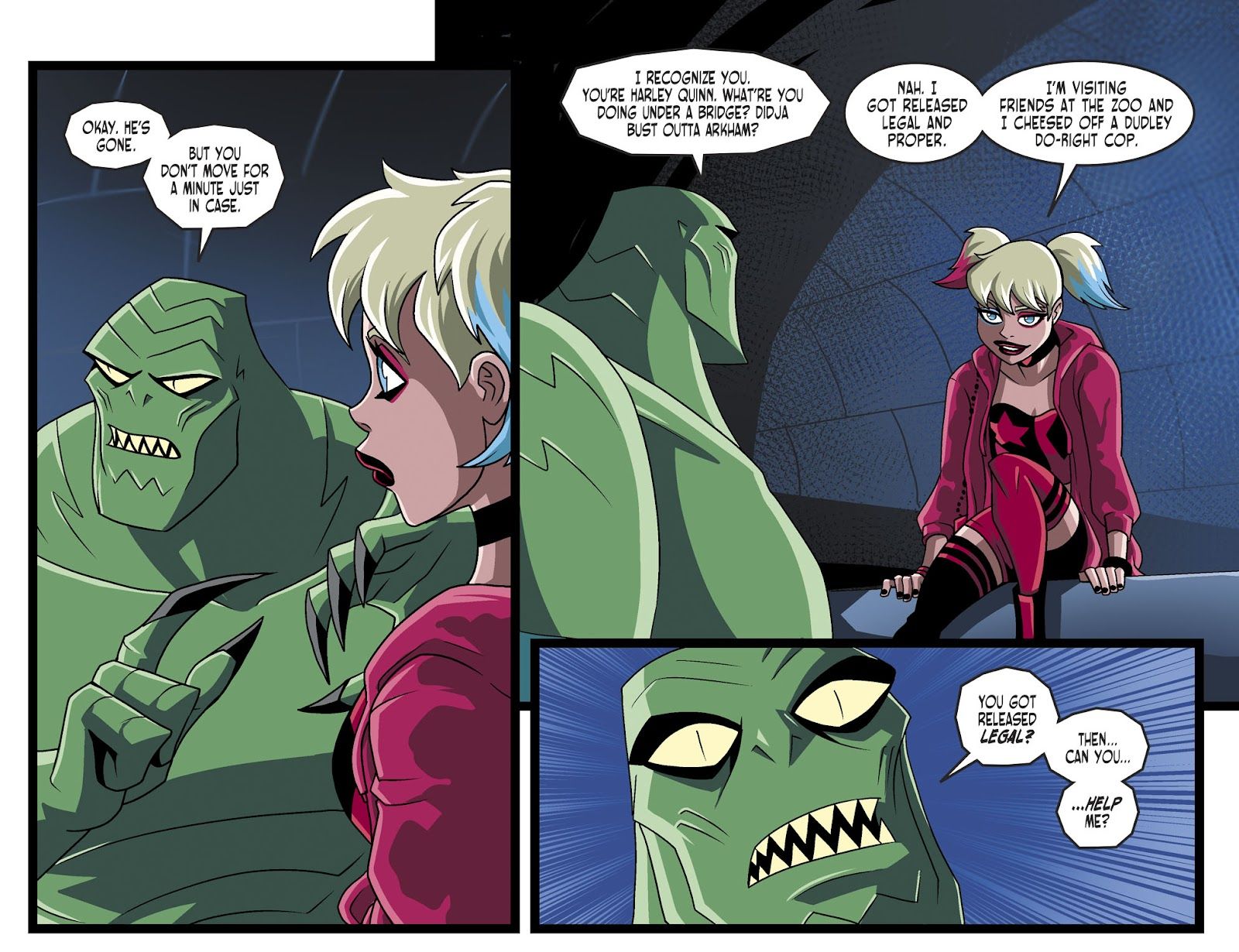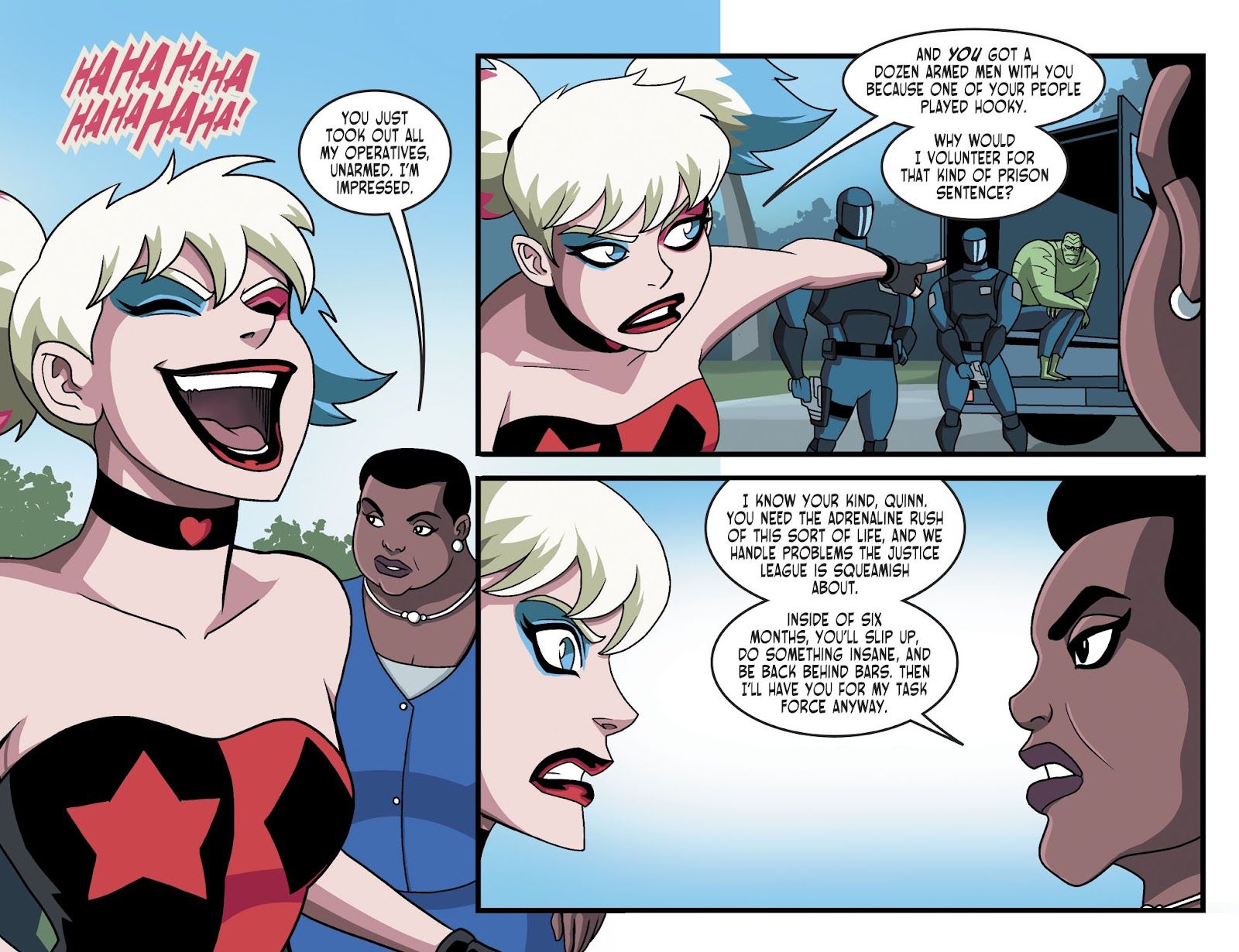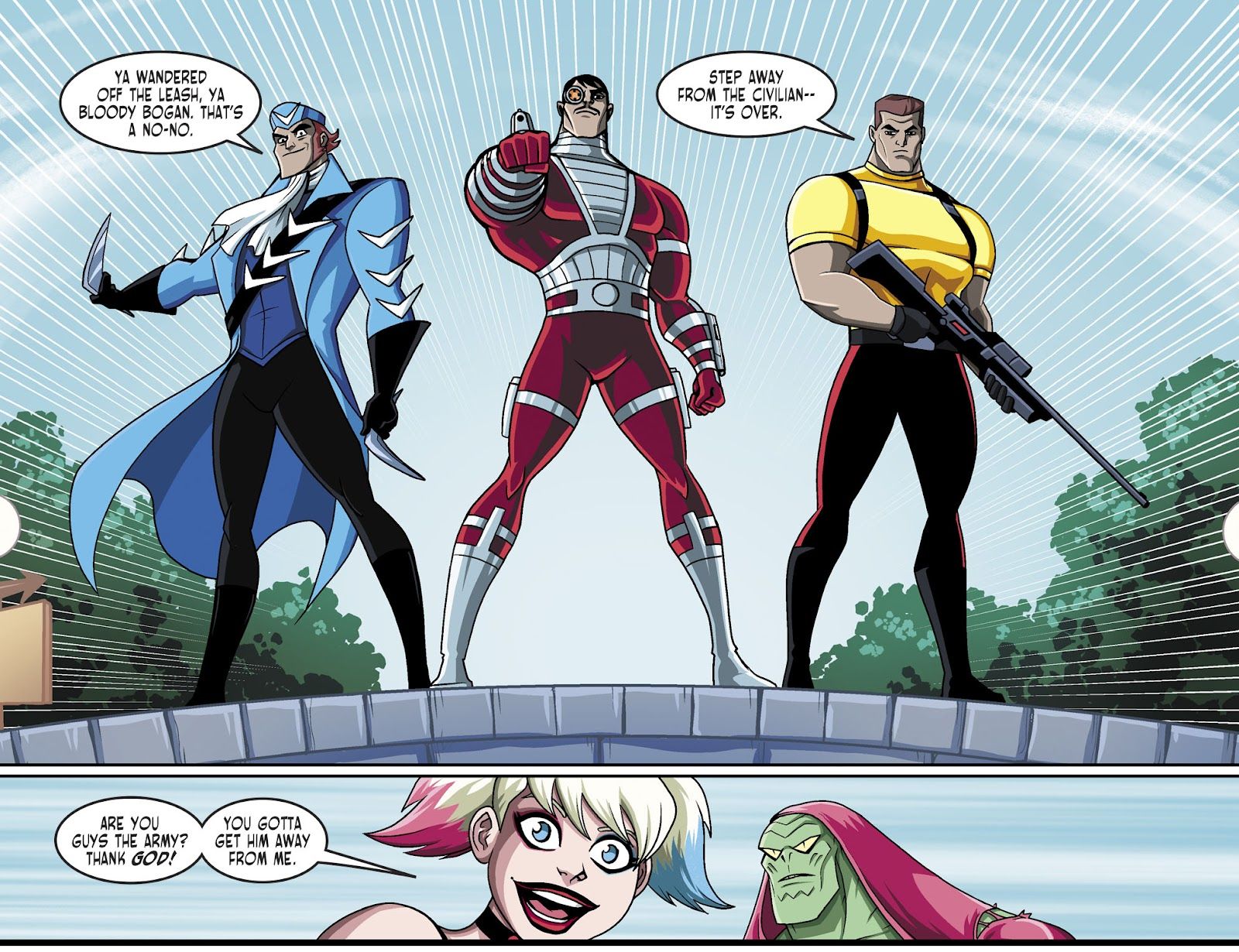Welcome to the 163rd edition of Adventure(s) Time, where we look at animated heroes of the past. This week, years before the films, we have the television debut of the Suicide Squad (even though the censors certainly didn't want to call them that.) If you have any future suggestions, let me hear 'em on Twitter.
Debuting on May 21, 2005, "Task Force X" is another fast-paced, action-oriented Justice League Unlimited episode from director Joaquim Dos Santos. Joining him is plotter Dwayne McDuffie (one of the masterminds behind this era of the DC Animated Universe) and scripter Darwyn Cooke. Even though Cooke's work on The New Batman Adventures and Batman Beyond inspired his return to comics on projects like Batman: Ego, this episode is his only official scripting credit on a DCAU episode. Anyone familiar with Cooke's work on comics like Selina's Big Score and his adaptations of Richard Stark's Parker novels will understand why he's so perfectly suited for a heist story like this one.
Approved by Broadcast Standards
While the title "Task Force X" might lead some to expect a parody of Marvel's once-indestructible X-Men property, it's, in fact, a nod to classic DC continuity…and a means to appease the network's censors. Created by writer Robert Kanigher and artist Ross Andru, Task Force X is the official government title for a group of agents sent on missions with impossible odds. "Suicide Squad" is the far snappier title the agents call themselves (just fine by the 1960s Comics Code, but not 2000s-era Cartoon Network censors).
The original concept, debuting in The Brave and the Bold #25, doesn't bear much of a resemblance to the concept the public recognizes today, but team leader Rick Flag is there. The re-imagined version from the 1987 series conceived by John Ostrander inspired both this episode and the film series -- a team of supervillains with combustible personalities working their way to a pardon.
The peculiarity of this episode is evident in its opening moments, as the story follows none of the Leaguers but instead assassin Floyd "Deadshot" Lawton, a villain who previously appeared during Justice League's first season. He's introduced to Amanda Waller, who offers him freedom from his death sentence in exchange for five years of government service in Task Force X. He's joined by Plastique, Captain Boomerang, and the Clock King, under the leadership of the stern Rick Flag, Jr.
Meet the Squad
This lineup reflects various iterations of the team during John Ostrander's run on the Suicide Squad comic. Deadshot previously enjoyed a memorable appearance in "The Enemy Below," with Flash voice actor Michael Rosenbaum doing double-duty as the assassin. Rosenbaum apparently applied his eerily perfect Kevin Spacey impersonation to the character as a joke, but it fits him perfectly. Deadshot has much more to do in this episode, yet the Kevin Spacey angle never feels like a tired gag. The sadistically cool Deadshot, as written by McDuffie and Cooke, really would sound this way.
Firefly actor Adam Baldwin (who will later voice Superman and Hal Jordan in other animated projects) manages to play Rick Flag as the team's straight man while also hinting at some darkness behind the surface. Original Clock King voice actor Alan Rachins returns to voice the villain, one of the few Batman: The Animated Series rogues ever to appear on Unlimited. The icy "wound too tight" quality of his voice still resonates, a reminder that the producers were always excellent at finding perfect actors. Some DCAU recastings were inevitable, but it's always great to see the original actors stick with a role.
One of the most unexpected performers has to be Mel's younger brother Donal Gibson as Captain Boomerang. Donal's previous voiceover work was the part of John Smith in Disney's Pocahontas II: Journey to a New World when his brother was unavailable for a direct-to-video cash-in movie. (This is the era that had Disney also casting Tom Hanks' brother for the Toy Story cash-ins). Some of that Gibson family, uh, passion is evident in his portrayal of the coarse Captain.
The Bad Guys Win
Task Force X's assigned mission is to steal Ares' Annihilator, the big plot device weapon from the previous episode, "Hawk and Dove." It's being housed on the Justice League's Watchtower…and surely it's just a coincidence that Waller's associates in the Cadmus conspiracy have already targeted the League.
We follow Task Force X as they ambush a group of Watchtower employees and infiltrate the base. Before their inevitable exposure, we see the team bicker and flirt, with dynamics that are honestly more intriguing than anything either Suicide Squad film provided. Deadshot's nihilistic attitude, his willingness to do anything for a cheap thrill, brushes up perfectly against Rick Flag, who wants nothing more than to get this over with as soon as possible. (And to be free of these freaks he's been paired with.)
The team's cavalier decision to leave behind an injured Plastique in order to complete the mission is another element the audience wouldn't expect from a standard superhero story. The plot carefully makes Task Force X engaging enough to follow but never allows the audience to view them as heroes in this narrative. Even the faceless Watchtower personnel the team ambushes before entering the League's base have a moment to showcase their humanity, emphasizing that the people setting them up aren't the good guys.
Although J'onn J'onzz (called Martian Manhunter here for the only time in the series' run) acts as an unbelievably fierce opponent, he's unable to prevent Task Force X from escaping with the Annihilator. This leads to an unnerving moment where J'onn contemplates how to handle the government mole who allowed Task Force X to enter, a lowly technician who works onboard the Watchtower. J'onn seems more than willing to wipe the man's mind, an act that would confirm everything Cadmus has chosen to believe about the League. As Green Lantern points out, however, this was but one potential security breach. From the League's perspective, they can no longer trust anyone.
The Croc and the Harlequin
Regretfully, Task Force X didn't make any return appearances on Unlimited. The tie-in comics have a long history of continuing the stories of DCAU characters, however, and the team ended up with a surprising appearance in a descendant of the classic Adventures titles.
To coincide with 2017's Batman and Harley Quinn, the first animated DCAU project in over a decade, two tie-in comic series were released by DC. In a not-at-all confusing bid at synchronicity, the movie's prequel series was entitled Harley Quinn and Batman, while the sequel was named Batman and Harley Quinn. (Fans desperate to know what happened to Nightwing's mullet should consult the prequel series.)
Batman and Harley Quinn #6-7, from Adventures mainstay writer Ty Templeton and artist Luciano Vecchio, opens with Harley visiting her one-time hyena friends at the Gotham Zoo. Her attempt to free them from animal prison is foiled by a security guard -- the only svelte "cop" in Gotham, by Harley's estimation -- and Harley finds herself hiding out in the nearby sewers.
There, she meets Killer Croc, who's on the run from his teammates in Task Force X. It's evident Waller's recruitment of supercriminals continued after Unlimited's cancelation. Perhaps she was getting a bit desperate if she ever thought the mindlessly violent Croc was a solid candidate. Of course, for the millions who saw both Harley and Killer Croc as teammates in the 2016 Suicide Squad film, this all feels familiar. Harley's even ditched her classic Batman: The Animated Series court jester look for Margot Robbie's pigtails and a halter top ensemble.
With surprising sincerity, Croc tells Harley of the government's mind control experiments and his hopeless attempts to gain freedom. Harley does her best to help Croc escape, yet Task Force X ambushes the duo, and Croc is eventually recaptured. Harley's brief attempt at heroism blows up in her face after destroying a priceless jewel (one she'd acquired earlier in this series) when attempting to protect Croc. To her immense irritation, she then discovers that Croc was lying about Waller's inhumane mind experiments. And he wasn't that interested in escaping Task Force X, anyway -- really, he just wanted a day off at the zoo.
Harley's creativity and athleticism impress Waller, however, and she's offered a slot on Task Force X. Waller says it's inevitable Harley's returning to crime anyway, and she'd save everyone some time if she signed up before her next arrest. Harley laughs at the concept, determined to only look out for herself from now on. Perhaps this was Templeton's meta-commentary about contemporary Harley's membership in the Squad. But as the years have advanced, she's pretty much become the public face of the team.
"Always Did Want to Die for My Country."
Even though the later DCAU tie-ins aren't shy with profanity and sexual innuendo, it's interesting to see Task Force X wasn't renamed Suicide Squad in their comics return. It is a nice nod to the official continuity, though -- one of the few, since most DCAU revival projects have taken an informal attitude toward the canon.
Both stories are nice examples of how easily the Suicide Squad concept can work within the DCAU. From Batman: The Animated Series on, the creators presented numerous captivating villains that deserve better than token slots on cannon fodder teams that exist only for throwaway action sequences. Whether it's Harley stumbling across the team (and inadvertently starring in a movie tie-in) or Unlimited shifting formats and becoming a heist flick for a week, it's a cool concept that shows the DCAU still has a lot of life in it - even hundreds of stories deep into its mythology.

